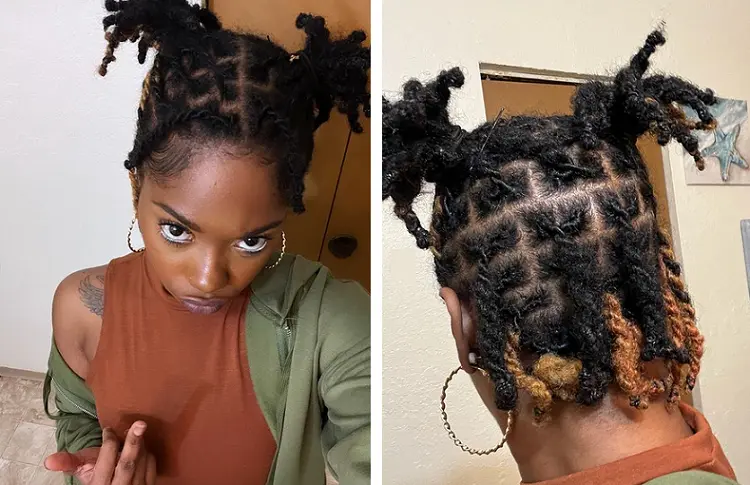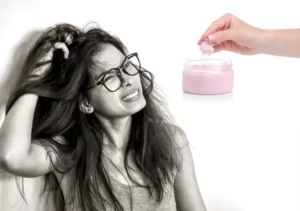Have you been curious about wearing dreadlocks but are afraid to take the plunge? Look no further than starter locs! These stylish twists are the ‘baby stage’ of the traditional dreadlocks hairstyle and have been becoming a modern and trendy hairdo.

Not only do starter locs look sexy and sophisticated, but they’re also great for your hair. Starter locs are a low-maintenance, protective style that can help promote healthy hair growth and minimize damage. Plus, with endless variations in size and styling, you can easily make them your own. So, let’s dive in and explore the world of starter locs – your next favorite hairdo awaits!
Table of Contents
- What are Starter Locs?
- How To Do Starter Locs
- Starter Loc Techniques
- How Long For Starter Locs To Mature
- How To Wash Starter Locs
- How to Maintain Starter Locs
- How To Take Out Starter Locs
What are Starter Locs?
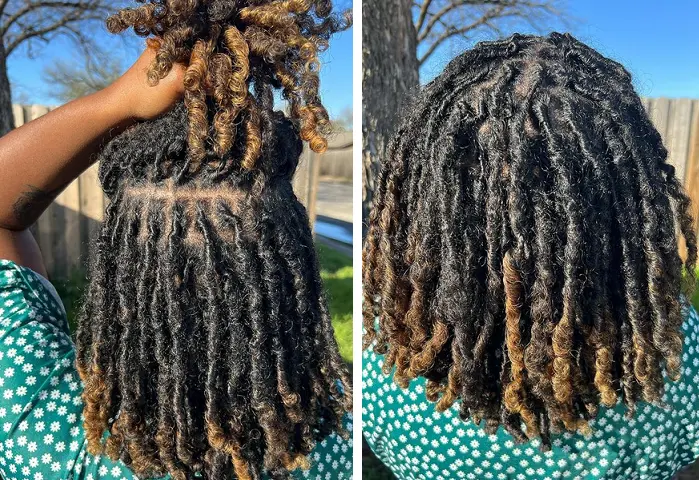
Starter locs, also known as baby locs or budding locs, are a hairstyle that involves creating small, shorter coiled locks of hair that are in the beginning stages of maturing into longer, fully-formed dreadlocks. This hairstyle is popular among those with thick and curly hair, particularly those with African-textured hair.
They are a versatile hairstyle that aren’t limited to one design. Starter locs are perfect for an effortless, relaxed look– or can be more polished and gussied up for a professional day or sexy night out. One thing for sure is you’ll definitely get a lot of stares while rocking this natural, trendy hairstyle.
How To Do Starter Locs
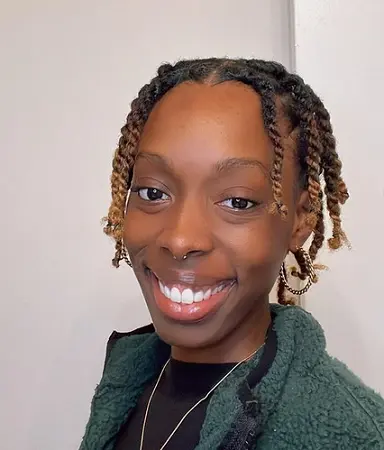
To create starter locs, the hair is first washed and sectioned off into small, even sections which will contain its own loc. Each section is then twisted tightly using several of many techniques (see below) that encourage the hair to begin locking.
The twists will dry and set for several days, during which time the hair will begin to lock and form into tight, uniform locs This process can take several months, during which time the hair is left alone to develop and mature.
On average, it can take anywhere from 2 to 6 hours or more to install starter locs, although times can vary depending on several factors, including the texture and length of the hair, the method used to create the locs, and the skill level of the stylist.
Starter Loc Techniques
There are several techniques that can be used for starter locs, including:
Two-Strand Twists
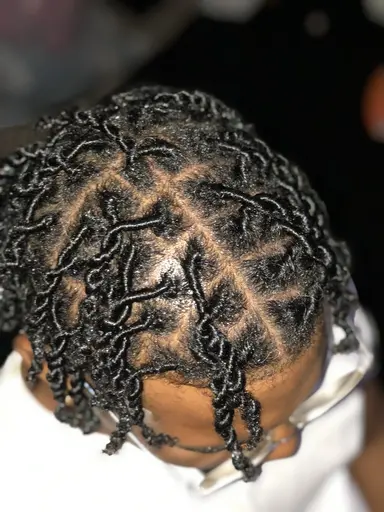
This involves dividing the hair into two sections and then twisting them together, creating a rope-like effect. Two-strand twists are a popular method for starting locs, and they can be done with or without added product.
Coil Method
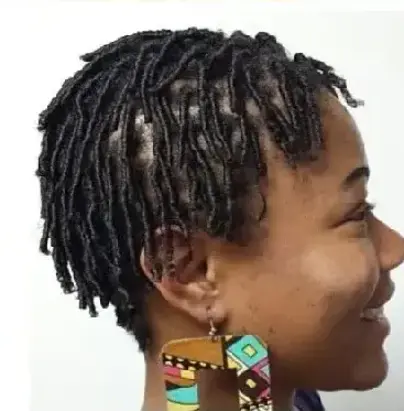
This involves twisting small sections of hair around your finger or a tool, creating small spirals that eventually lock into place This method is especially useful for hair that is more prone to unraveling and for tighter locs.
Interlocking
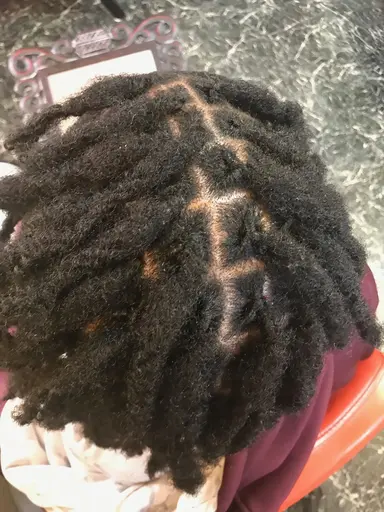
Interlocking is a technique for maintaining dreadlocks that involves weaving the loose hair at the roots of the dreadlocks together to create a tighter, more secure hold. Interlocking can be useful for people who have finer hair or hair that is prone to unraveling.
Backcombing
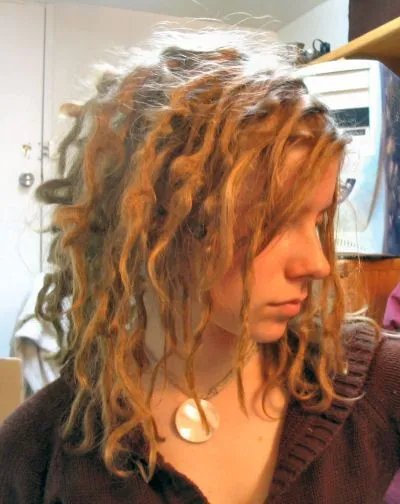
This method involves teasing the hair backward toward the scalp, creating a tangled base that will eventually mat into locs. This method is good technique for messier locs and for hair that may have a bit more difficulty loccing.
Freeform
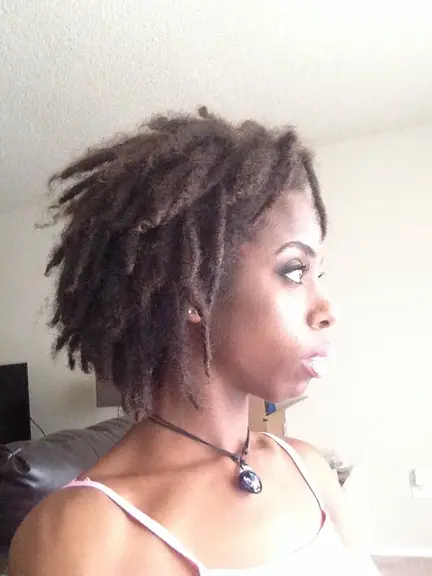
This technique involves simply allowing the hair to naturally lock and form into locs without any manipulation or styling. This method can produce unique and organic-looking locs but may require more time for the hair to fully form into locs.
How Long For Starter Locs To Mature
The time it takes for starter locs to fully mature varies depending on several factors, including the texture of the hair, the thickness of the locs, and how well the hair is maintained. On average, it can take anywhere from six months to a year or more for starter locs to fully mature into fully-formed dreadlocks.
During this time, it is important to be patient and avoid manipulating the hair too much, as this can slow down the locking process. Regular maintenance, including retwisting and washing, can help encourage healthy hair growth and the development of strong, well-formed locks.
How To Wash Starter Locs
Maintaining clean and healthy starter locs involves regular washing, which should be done every 1-2 weeks. To wash your starter locs, you should first select an appropriate shampoo that does not leave any residue. It is recommended to use a sulfate-free shampoo that is specifically designed for locs, and diluting it with water can help to reduce its weight.
To start washing, wet your hair thoroughly with lukewarm water, taking care to avoid using hot water as it can lead to dryness and brittleness.
Next, apply a small amount of shampoo to your palm and massage it gently into your scalp and hair sections, being careful not to scratch or scrub the locs out of position. Rinse your hair thoroughly with lukewarm water until all the shampoo is removed.
After rinsing your hair, apply a little more shampoo to the longer ends of your hair, using a gentle squeezing or massaging motion. You should avoid using any conditioner or detangler, as they can make your locs unravel.
Squeeze out any excess water from your hair and pat it dry with a towel, taking care not to rub your hair vigorously to avoid frizz and breakage.
Finally, if your starter locs need to be retwisted, you can do so gently while your hair is still damp, using a small amount of locking gel or cream to hold the twists in place.
Related: Top 7 Best Human Hair Wigs: Affordable and Luxurious
How to Maintain Starter Locs
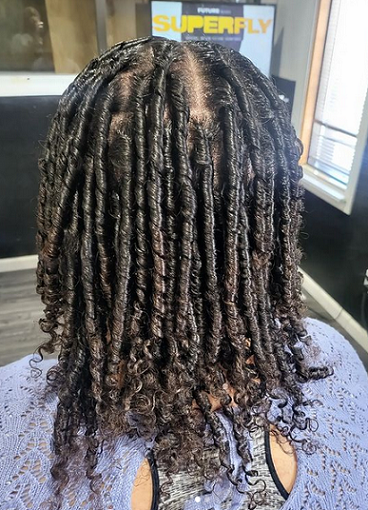
To maintain starter locs, regular retwisting is necessary. This involves twisting the hair at the root to keep the locks tight and prevent them from unraveling, best done after washing your hair. The frequency of retwisting will depend on the texture and thickness of the hair, but it is generally recommended to retwist every four to six weeks or if any locs unravel themselves.
To take care of starter locs, it is important to keep the hair moisturized and avoid over-styling or pulling on the locks. A light oil should be applied once a week to help keep the hair soft and hydrated and it’s best to wrap your hair up in a bonnet or scarf while sleeping.
How To Take Out Starter Locs
To take out starter locs, you can follow these steps:
- Start by separating your hair into sections. You can use hair clips or rubber bands to keep the sections separate.
- Apply a generous amount of de-tangling conditioner to each section. This will help to soften the hair and make it easier to comb through.
- Use a wide-tooth comb to gently comb through each section of hair. Start at the bottom ends and work your way up to the roots.
- If you encounter any knots or tangles, use your fingers to gently loosen them before continuing to comb through the section.
- If your dreadlocks are too tightly knotted or if you’re having difficulty untangling them, you may need to cut them off. Use a pair of sharp scissors and cut as close to the scalp as possible. Be careful not to cut your scalp or other strands of hair.
- Once you have combed through all the sections, rinse your hair thoroughly with warm water.
- Use a clean towel to gently blot your hair dry. Avoid rubbing your hair vigorously, as this can cause damage.
- Once your hair is dry, you can style it as desired.
It’s important to note that taking out starter locs can be a time-consuming process, especially if your hair has been growing for several months or more. Avoid pulling and further knotting your hair to avoid hair loss. You may want to enlist the help of a friend or professional stylist to make the process easier and faster.
Read More:

